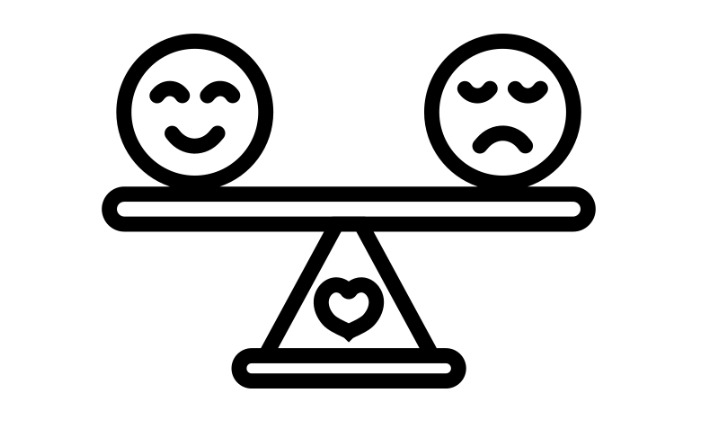
The Art of Emotional Regulation: Calming Your Inner Storm
Emotions are an inseparable part of being human. They guide our reactions, shape our relationships, and influence the way we see the world. Yet, when emotions become overwhelming—when anger turns explosive, sadness feels endless, or anxiety takes control—they can begin to interfere with our daily lives. This is where emotional regulation becomes essential: the art of managing what we feel, when we feel it, and how we express it.
Emotional regulation doesn’t mean suppressing emotions or pretending that everything is fine. Rather, it’s about understanding and responding to emotions in a balanced and healthy way. It’s the ability to acknowledge your inner experience without being consumed by it. People regulate their emotions in healthy and surprisingly unhealthy ways. Emotional outbursts, deliberate suppression, and distractions are some of the common unhealthy regulation strategies. However, processing through journaling, healthy discussion with peers and professionals, and exploring the source of emotions are generally considered as healthy regulations.
Understanding Emotional Regulation
At its core, emotional regulation is about awareness. It starts with noticing what you are feeling, identifying the emotion, and then understanding its source. For instance, irritation after a stressful meeting may actually stem from exhaustion or feeling unheard. Recognizing this difference helps us respond more effectively.
Psychologists often describe two main components of emotional regulation: recognition and response. Recognition involves becoming aware of your emotions as they arise, without judgment. Response involves choosing how to act—whether that means calming yourself before speaking, taking a break, or expressing your feelings assertively rather than reactively.
When emotions are regulated, we can make thoughtful decisions, communicate more clearly, and reduce unnecessary conflict. On the other hand, when emotions spiral out of control, our body’s stress response activates, clouding judgment and amplifying distress.
Why Emotional Regulation Matters
Learning to regulate emotions benefits nearly every aspect of life. It strengthens mental health, improves relationships, and enhances performance at work or school. Research in psychology has shown that individuals who regulate their emotions well experience lower levels of anxiety and depression and higher levels of well-being. They are also better at handling change and uncertainty—skills that are vital in today’s fast-paced world.
Emotionally regulated individuals are not immune to stress, anger, or sadness; they simply have the tools to navigate these emotions rather than being overwhelmed by them. This resilience allows them to recover faster after challenges and maintain a greater sense of balance and stability.
Practical Strategies to Calm Your Inner Storm
-
Pause Before You React: When emotions run high, take a few deep breaths before responding. A short pause allows your brain’s rational center to catch up with your emotional response.
-
Name the Emotion: Simply labeling what you feel—“I’m frustrated,” “I’m hurt,” “I’m anxious”—can reduce its intensity. This is known as “affect labeling,” and it has been shown to calm activity in the emotional centers of the brain. Using tools like the Emotion Wheel can also help identify and expand your emotional vocabulary, allowing for deeper emotional awareness.
-
Practice Mindfulness: Mindfulness trains you to observe your emotions without judgment. It helps you realize that feelings are temporary—they come and go like waves. Even two minutes of slow, focused breathing can shift your state of mind.
-
Reframe Your Thoughts: Often, it’s not the situation itself but the way we interpret it that fuels emotional distress. Ask yourself: “Is there another way to see this?” This is called cognitive reappraisal, a well-researched technique known to improve emotional management skills by helping you see situations from a more balanced perspective.
-
Engage in Physical Movement: Emotions are not just mental—they are physiological. A short walk, some stretching, or gentle yoga can help release tension and regulate your nervous system.
-
Reach Out for Support: Talking about how you feel can provide clarity and comfort. Sharing with a trusted friend, family member, or counselor can make emotions feel more manageable.
The Gentle Reminder
Emotional regulation is not about control—it’s about connection. It’s about connecting with yourself deeply enough to understand your emotional patterns and respond with care instead of reactivity. It takes time, self-awareness, and compassion to master, but every effort you make is a step toward inner balance.
At times, emotions can feel too heavy to manage alone. If you find yourself struggling to cope with intense emotions, persistent stress, or anxiety, remember that help is available.
At Happy Minds, our team of compassionate mental health professionals can help you develop practical tools to understand and regulate your emotions. Together, we can work towards greater calm, resilience, and emotional well-being.
Call us at +977 9801031443 or visit www.happyminds.health to book a confidential counselling session today. You don’t have to navigate the storm alone—support and healing are just a conversation away.
Author: Karmendra Prakash Shrestha
